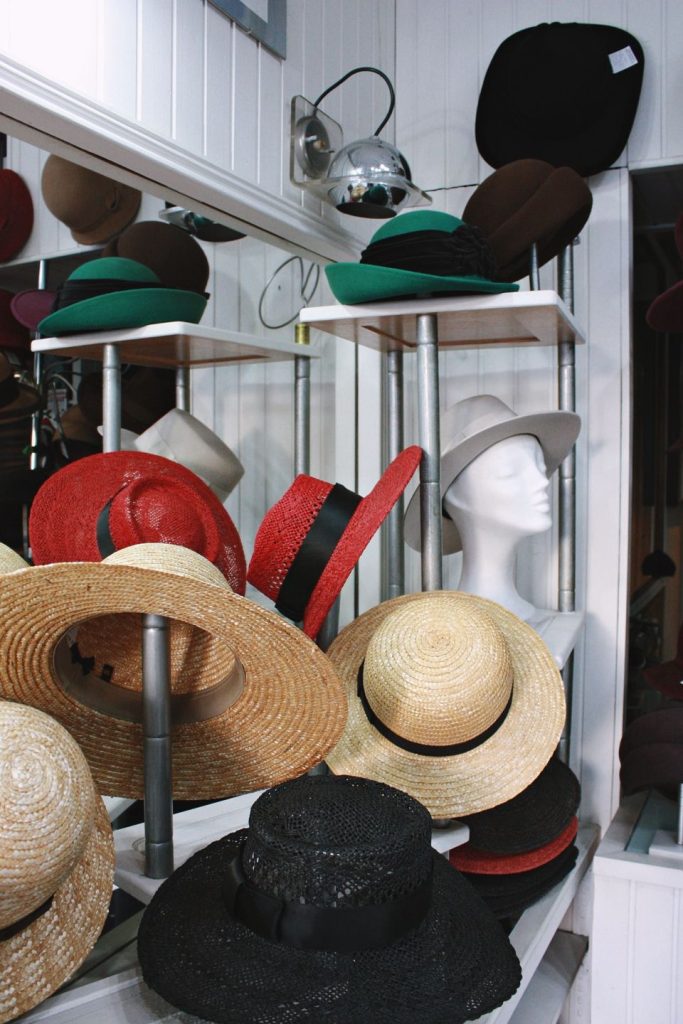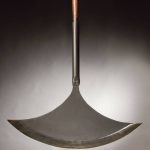I’ve always been intrigued by traditional crafts that have managed to resist the ravages of not only time, but new technologies and trends as well, especially now that everything is produced on an assembly line and the quantity is more important than quality. Faded letters on walls and old signs pointing to long-forgotten skills, such as changing fabrics on buttons, or repairing umbrellas, which can be found around Zagreb, and especially in Ilica, make you long for times gone by, which you may not even have a true connection with, but they still make you inexplicably nostalgic.
Having this in mind, I decided to visit one of the oldest millineries in Zagreb – Škrgatić Hats. I’ve loved hats since as long as I can remember, but as the Nikšić genes would have it, I’ve only been able to find three that fit on my weirdly large head. I have no idea how my head would fare in early 20th ct when everyone wore hats, but I love to idealize the period and think that I’d wear obscenely large and colorful hats.
The roots of Škrgatić Hats go back to Vladimir Škrgatić’s grandfather, Gabrijel Vanek, who opened a millinery shop in Sremska Mitrovica in 1870. His son Vilko Vanek came to Zagreb in 1912 and opened a hatmaker’s and millinary artisan workshop in Jurišićeva 2, where he produced and repaired men’s and women’s hats. That same year he started hat factory „Vilko Vanek-Zagreb“ in Gundulićeva 21 where there were offices and storehouse, while Ilica 76 was the place where hats were produced. By 1938 there were 60 employees/hat producers and 6 salesmen. In 1938 Vilko closed his factory and moved to Varšavska 9.
In 1928 Vilko’s sister Olga Škrgatić, nee Vanek, opens in Ilica 103 hatmaker’s business „Hat Industry-Express“. In 1932 she moved her business to Skalinska 7. In 1930 Olga’s husband Milan Škrgatić joined the hat maker’s business and opened the hat shop „Olga“ in Ilica 164. In 1942 Vladimir Škrgatić, Olga’s and Milan’s son, together with his wife Josipa opens hats and caps workshop in Maksimirska 16. In 1947 they moved to Heinzlova 2a, where hat production/manufacture and shop are still located. In 1991 Vladimir and Josipa retired and their son Damir took over the business and continued familiy tradition till 2005 when the bussiness has been taken over by Damir’s son Darko Škrgatić who is the 6th generation to carry on long standing family tradition of hat and cap artisan production.
I stopped by the workshop to chat to Darko a few days ago.
Is it difficult to make a living with such a rare profession these days?
– Well, there are good and bad years. There’s always more business during winter, especially if the winter is cold and dry, because that’s when hats and caps are sold the most. Warm and rainy winters, like the ones we’ve had for the past couple of years, mean that people don’t wear hats that much. In any case, it’s not easy, because, in addition to the climate, the trends have changes and hats aren’t in demand as they used to be. I’ve managed to make it work and I try for the sales to go up every year, even if it’s just a slight increase, it still counts.
How long does it take to make a hat, on average?
– It depends on the model – I don’t have specific data, but I’d say simpler models take three and a half to four hours to make, while complex models sometimes take five or six hours.
Who are your most frequent customers – older or younger people?
– When I took over the trade, my clients were mostly people over 55. I’m thrilled that this has changed over the past four years and there have been more and more clients aged 20 – 40.
Are your clients picky and have specific demands or do they leave the design to you?
– Well, most clients buy readymade hats, but many people have their hats custom made as well. There are, of course, simple and complicated demands, but I’d say that the less complicated ones are the majority. I’m not a designer from scratch – people come to the shop with an idea or a photo of a hat they’d like. If I have the necessary mould, we then agree on the material, colour, size, etc. If I don’t have a mould the hat they want requires, I try to find the one that is most similar to the mould they’d like and explain what I could do in order to make the hat as similar as possible to the model they want.
Darko mentioned that one shelf was empty because the hats were borrowed for a fashion show. I asked if this happens often.
– I do work with fashion designers, but not so often. On the other hand, I work with theatres a lot and I really love it, I enjoy making hats for plays, it makes me truly happy. Just a couple of weeks ago I made some hats for the Croatian National Theatre in Osijek and I can’t wait to work with theatres again. I also make hats for culture clubs and folk associations in Croatia and Slovenia.
The shoemaker’s children go barefoot, as the proverb goes, so I wanted to know if the hat makers’ children go hat-free.
– I wear hats in winter, and the model I wear is my favourite. I call it Teardrop Pork Pie. Teardrop because the top resembles the classic Teardrop model, and the 4-centimetre brim is similar to that of Pork Pie hat, so it’s a combination of the two.
Being part of a family business, I asked Darko if his parents and grandparents ever mentioned what the golden age of hat-making was.
– Late 19th and early 20th centuries were definitely the ages of the hat. After World War II, everyone was affected by the post-war crisis, so the sales declined, but I remember my grandpa telling me that hats made a comeback in the ‘60s, ‘70’s and early ‘80s.
I’ve always thought that inheriting a family business is both a blessing and a curse – blessing, because you don’t have to worry about finding a job, curse because your future is predetermined.
– I agree, it’s something between the two. Today you feel lucky if you manage to find a job, but the job is not as profitable as it used to be. Then there’s the unfortunate financial crisis and an unstable market that has been around for more than 25 years, and the warmer winters. I try to make it a blessing – I’ve been making hats since I was 15 and I have no idea what I’d be doing right now if I hadn’t taken over my family’s business.
Darko added that he was generally happy with the incentives and engagement of local and city authorities, but he feels that other craftspeople aren’t as connected as they should be. He has better relations with colleagues from Slovenia and he tries to stay in touch with other European colleagues as well.
Of course I was curious to know who his favourite client was.
– Hugh Laurie, or Dr House! I made a custom-made hat for him for his Dom sportova performance, and he loved it, which I’m very proud of.
Finally, I asked what his predications for the future of millinery as a trade were.
– I hope that hat-making will persist in the future as well. Hats are becoming more and more popular among the younger population around the world, and Croatia is no exception. Of course, I’m aware that the golden age of hats is unlikely to happen anytime soon, it’s hard to imagine everyone with hats or caps on, but I think that there’s space for improvements.
Click below to see a video of a hat getting its final touches on our Instagram:
Find out more abut Škrgatić hats here and visit them at Heinzelova 2!









